Yoga to control anxiety
7 minuteRead

A lot of us suffer from anxiety. You might have tried perhaps by learning better strategies, obtaining a new medication, exercise, venting, and so on but nothing worked to get rid of this anxiety. Why is it so difficult? Why can’t I have control over my life? Why can’t I make proper judgments? I can never do that, can I? HANG ON! Before you start hounding over your thoughts, let me remind you that you slightly believe in yoga and think that it might help you with your anxiety. You have considered yoga for anxiety as your last ray of hope or else you wouldn't be here, searching for anything related to yoga and anxiety. Right?
You are finally here to find out whether there is any relaxation technique for anxiety or any position in yoga for anxiety and stress-related problems, then let's have at it. Here are a few yoga postures or positions that will aid you in managing anxiety so that you progress at your personal goals instead of lurking in your thoughts; obsessing over something that might lead you to panic attacks every now and then.
1. Anjali Mudra
Anxiety and relaxation aren't companions but it's not impossible to strive for relaxation even with anxiety. Once you instill yoga into your routine, you will have a mind free of anxious thoughts someday. Many prefer yoga for reducing stress and anxiety because of its low-impact exercises. If you have decided to spring yourself into practicing yoga and don't know where to start, then here's your answer.
Start with Anjali mudra .Though, this mudra is popularly used as a gesture to say hello and greet one another in India, yet carries profound meaning. Anjali mudra symbolizes unity between you and me, filled with unconditional love within us for each other. This simple yet powerful mudra stimulates our body to reach a meditative state, thus helping us to relieve stress and anxiety.
How to do Anjali Mudra ?
- Join your hands.
- Bring both your palms together without exerting pressure on each other.
- Place your palms at the center of your chest or just in front of where your heart is located.
- Keep your shoulders stiff and your back straight.
- Close your eyes.
Practice this as 5-minute yoga for anxiety and stress-related problems and observe how light your heart gets.
You can also watch this video to learn about Anjali Mudra.
2. Anulom- vilom pranayama
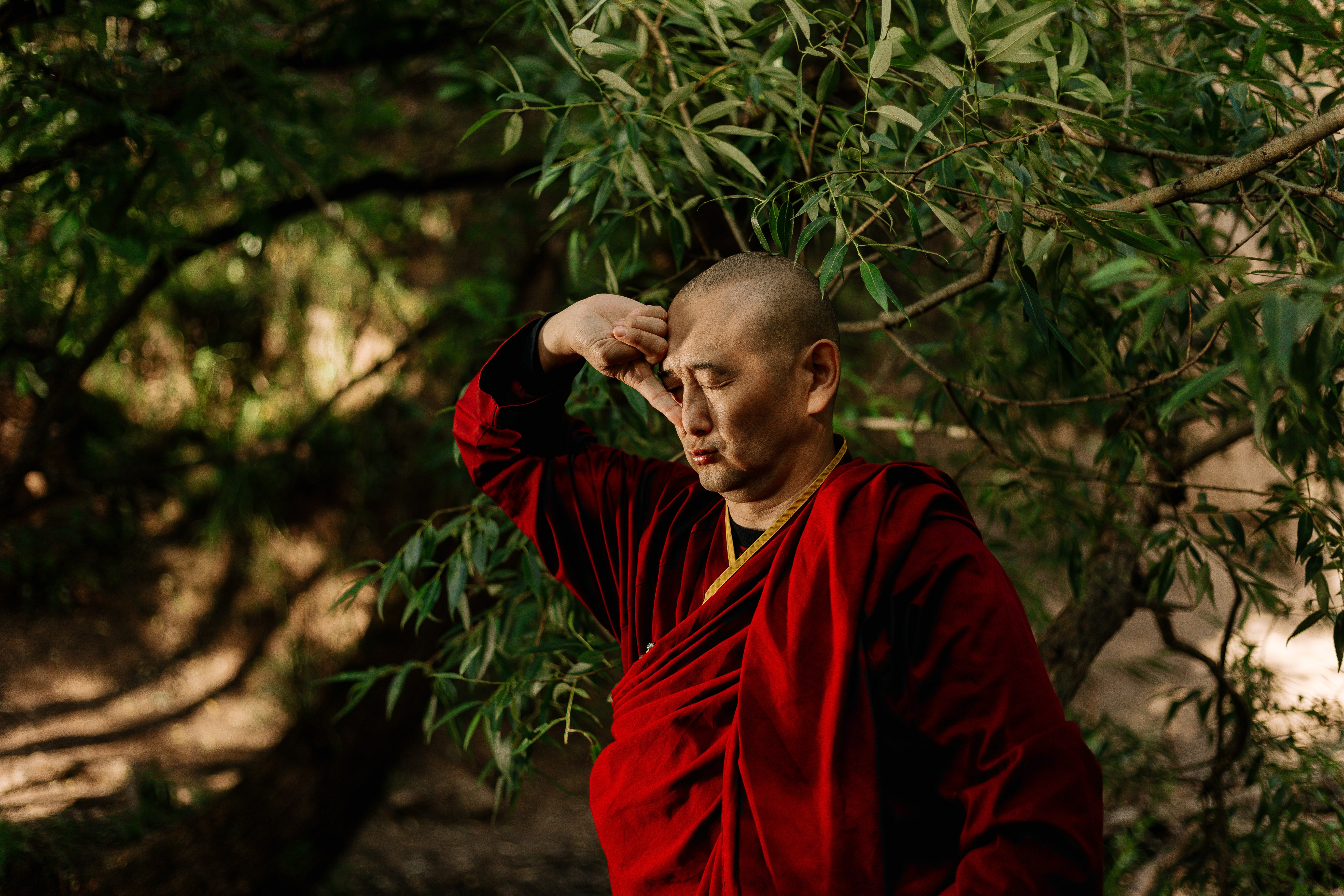
Most of the people who suffer from anxiety aren’t aware of thoughts that are truly affecting their life. Yoga's quick breathing exercises for anxiety helps you to notice any doubts, limitations, concerns, and disturbances that put you out of your way. By practicing Anulom-Vilom pranayam (alternate nostril breathing ) you can start to regulate your energy and calm your entire being. Practice Anulom - Vilom as one of your breathing practices for anxiety management and observe the magic that erupts inside you.
How to practice anulom-vilom pranayam?
This 5-minute breathing exercise for anxiety is a lifesaver. Get ready to do it anywhere and at any time.
- Sit in a comfortable posture.
- Take three deep breaths, first through both nostrils.
- Now, close your right nostril with the right thumb and inhale through the left nostril.
- Next, close your left nostril with the forefinger, hold your breath and then, exhale through the right nostril.
- Repeat this for 2 mins very slowly.
Learn few breathing basics to manage anxiety & stress from these videos.
3. Virabhadrasana 2
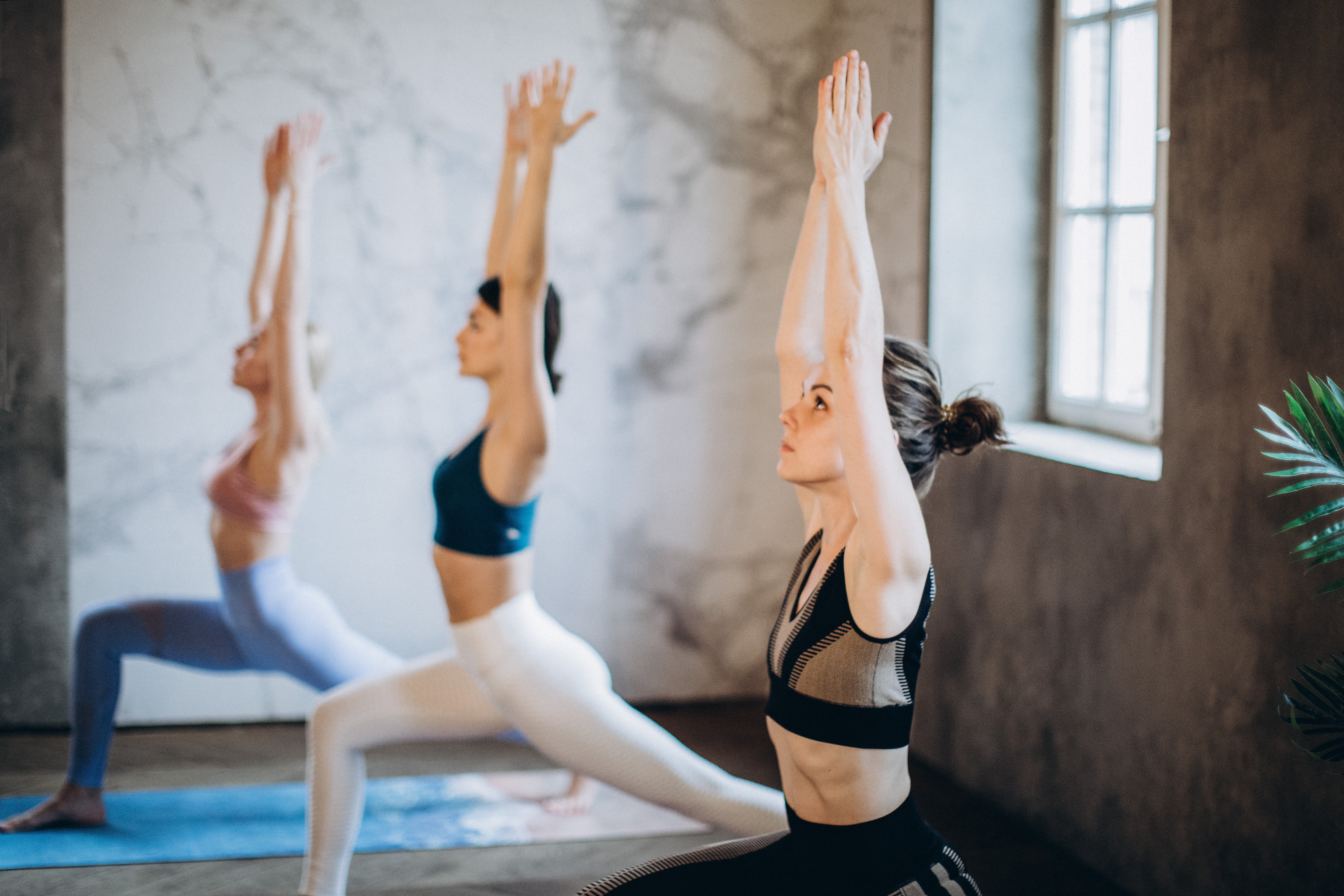
The most popular position in yoga for stress and anxiety relief is the Virabhadrasana 2. Fundamentally, anxiety lies in your nerves, and working on your nerves is a crucial component of yoga. All the balancing postures in yoga work on your nervous system and thus aid in reducing anxiety and stress. The Warrior 2 pose (Virabhadrasana 2 ) is also one of the balancing postures in yoga and is a favourite yogic posture among practitioners. It mainly concentrates on stretching your shoulders, chest, lungs and groin. The Warrior pose 2 further helps to energize your abdominal organs and improve your overall stamina. It serves as the best relaxation technique for anxiety.
How to do Warrior Pose 2?
If you have diarrhea or high blood pressure, or neck pain, you should avoid this pose.
- Stand straight with your feet apart.
- Turn your left foot 90-degree angle in the right direction, considering your initial position at zero degrees.
- Rotate your left thigh slightly out in the direction of your left feet.
- Raise your arms - parallel to the ground as if you are welcoming someone into your arms but completely wide open.
- Place your left arm exactly over your left leg while your right arm is above your right leg.
- Fix yourself as shown in the above picture.
- Stay in this position for one min.
Here's a video for you to learn Virabhadrasana 2 (Warrior Pose 2 ) – Step By Step
4. Viparita Karani
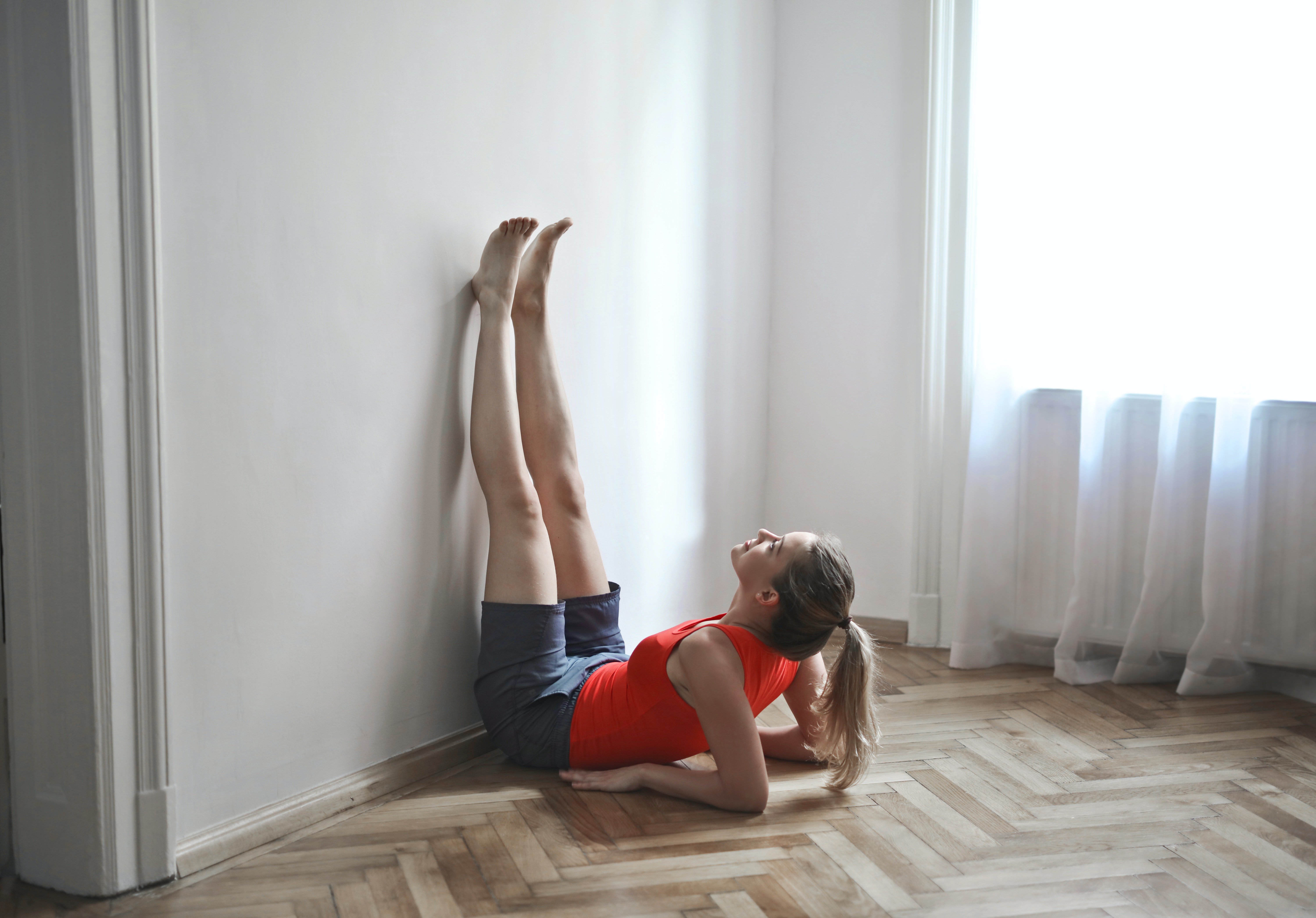
Viparita Karani or in simple terms - the legs up the wall pose is a recommended posture in yoga to calm anxiety and to help other mental health concerns. Viparita Karani stretches the backs of your legs and neck thus increasing blood flow in these areas which in turn helps your heart and muscles to perform efficiently. Many consider Viparita Karani as the best pose for relieving several conditions including insomnia, fatigue, etc. if you want to do yoga for reducing stress and anxiety, you must not miss this pose in your daily yoga practice.
How to do Viparita Karani ?
If you suffer from eyes, back, or neck problems, avoid this pose at all cost
- Lifting your legs onto the wall.
- If you are unable to lift it on your own, get some support.
- Start pushing yourself closer to the wall.
- Walk with your heels on the wall and let your hips touch the wall as shown in the picture.
- There you go, you are done.
- Keep breathing slowly and relax your body.
Learn how to do legs up the wall - Viparita Karani through this video.
5. Marjaryasana/Bitilasana (Cat & Cow Pose)
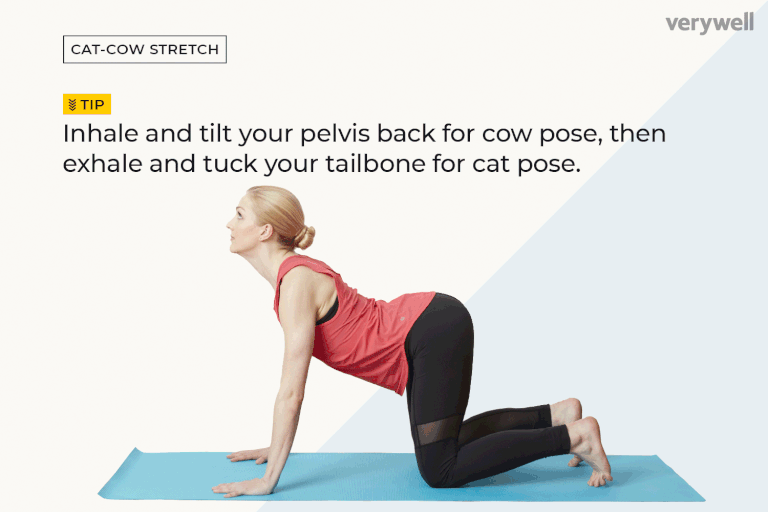
Source: verywellfit
Don’t they say anxiety never leaves? Well, that’s partly true. We often tend to forget that this battle is not meant to be won but to defend. Essentially because anxiety simply happens. The good news is, poses such as Marjaryasana (Cat & Cow Pose) are believed to be one of the easy relaxation exercises which confirms the benefits of yoga for anxiety. It also helps to reduce stress by calming the mind. In spiritual practice,
Marjaryasana opens out our Anahata (heart) chakra and stimulates self-love. How amazing is that?
How To practice Marjaryasana/Bitilasana (Cat & Cow Pose)
If you suffer from any injuries, then keep your head and neck in a neutral position throughout the exercise.
- Proceed to the position as shown in the above picture but keep your spine straight
- Keep your knees as apart as your hip width.
- Now, as you breathe in, let your back sag downward. As your back sags, lift your head and look up (cow position).
- After that, breathe out slowly. While you breathe out, release your head to lower until it hangs relaxed and then press your belly button up toward your spine forming an arch, pushing your back into a hump (cat position).
- Do this cow-cat stretch five times and then return to neutral spine position (the position from which we started).
Watch this video to master Marjaryasana/Bitilasana (Cat & Cow Pose)
6. Adho Mukha Svanasana (Downward-Facing Dog)
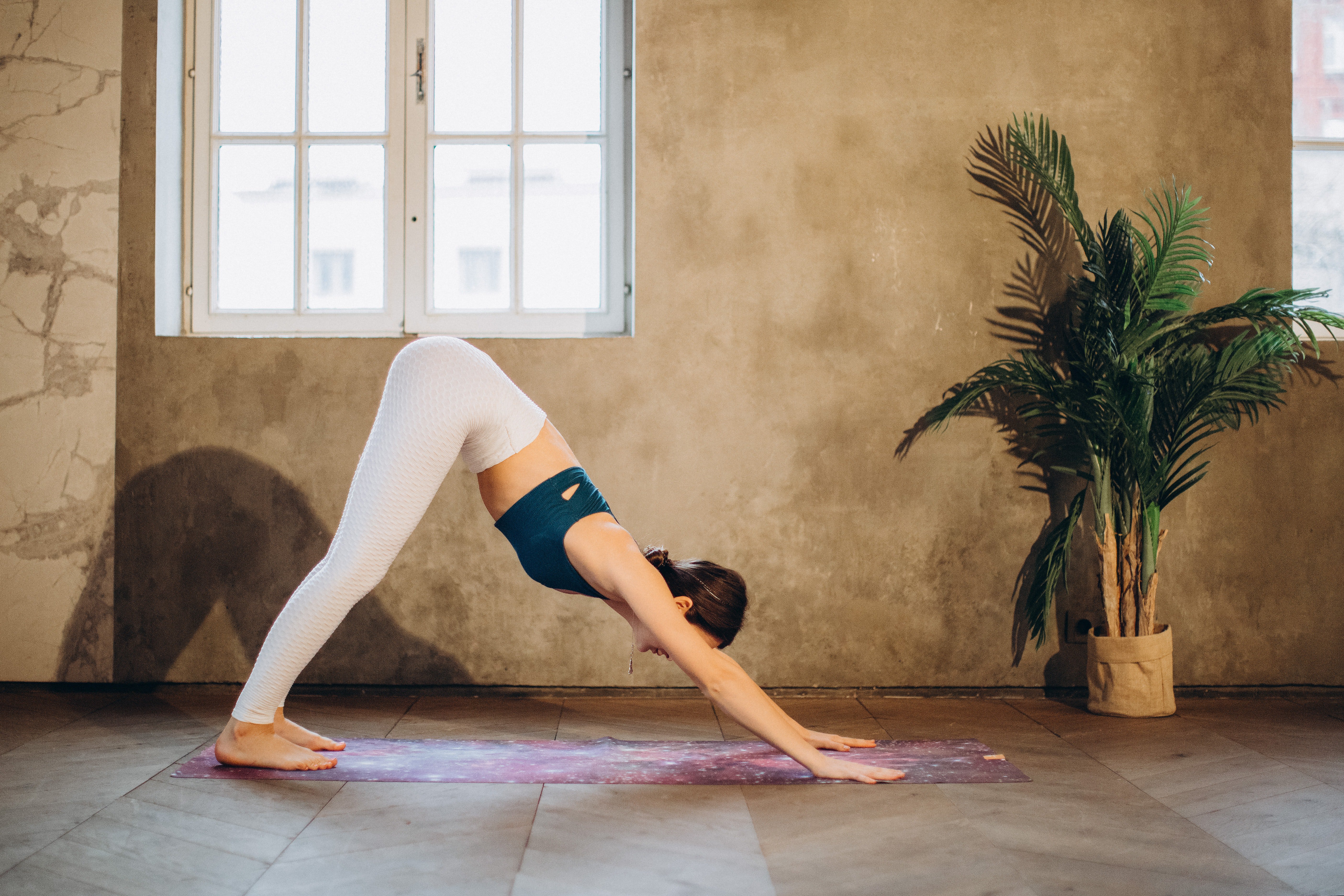
The effects of yoga on anxiety and stress when you perform Adho Mukha Svanasana (Downward-Facing Dog) can be easily observed when practiced regularly. It is great for your whole body. Adho Mukha Svanasana (Downward-Facing Dog) stretches your shoulders, hands, lower legs, and arches and releases the stress in them. This yoga posture is widespread among practitioners as it involves progressive muscle relaxation for anxiety and can help in relieving pain from fatigue, high blood pressure, and insomnia. By practicing Adho Mukha Svanasana, you will be able to reduce your anxiety and energize your overall being.
How to do Adho Mukha Svanasana (Downward-Facing Dog)
- Start with the cat-cow neutral position, in which your back is facing the roof while your head is faced down( not relaxed ) and your eyes focused on the ground.
- Slowly, Start to raise your knees off the ground.
- The feet must be a foot apart and the legs should be straight.
- Keep pushing the feet towards the ground to feel that nice stretch. Allow your feet to touch the floor completely.
- The arms should be stretched straight and must be shoulder-width apart.
- Keep your head firmly between your upper arms.
- Raise your hips as high as possible but keep your feet attached to the ground
- Your position should now resemble an inverted 'V' shape.
- Stay in this position for one to three minutes.
Watch this video to learn from yoga practitioners for better guidance.
To deal with anxiety, you need to do something radically different from what you’ve always done. Do the Opposite whenever your anxiety dictates you do something. When you are running and your mind asks you to stop as you will never get better at it, run a mile more. Allow your anxiety to know that you are in charge of your actions, not vice-versa. Remember, if you continue to do what you have always done, then you are going to get what you have always got. Try not to be unsympathetic towards yourself for no rhyme or reason. Try to know what can be changed and what will never be changed. When you are gentle towards yourself, you will ultimately think and act as if you are a delicate piece of art. No matter how malicious your thoughts become, try not to be unkind to yourself and try not to push yourself to overcome impracticable boundaries.
Bonus
Rinpoche's Meditation and Going Beyond Mindfulness is an extraordinary video that I came across recently. If you are interested to know more about mindfulness, here’s the link.
Write, Record and Answer! Consume Unlimited Content! All you need to do is sign in and its absolutely free!
Continue with one click!!By signing up, you agree to our Terms and Conditions and Privacy Policy.










